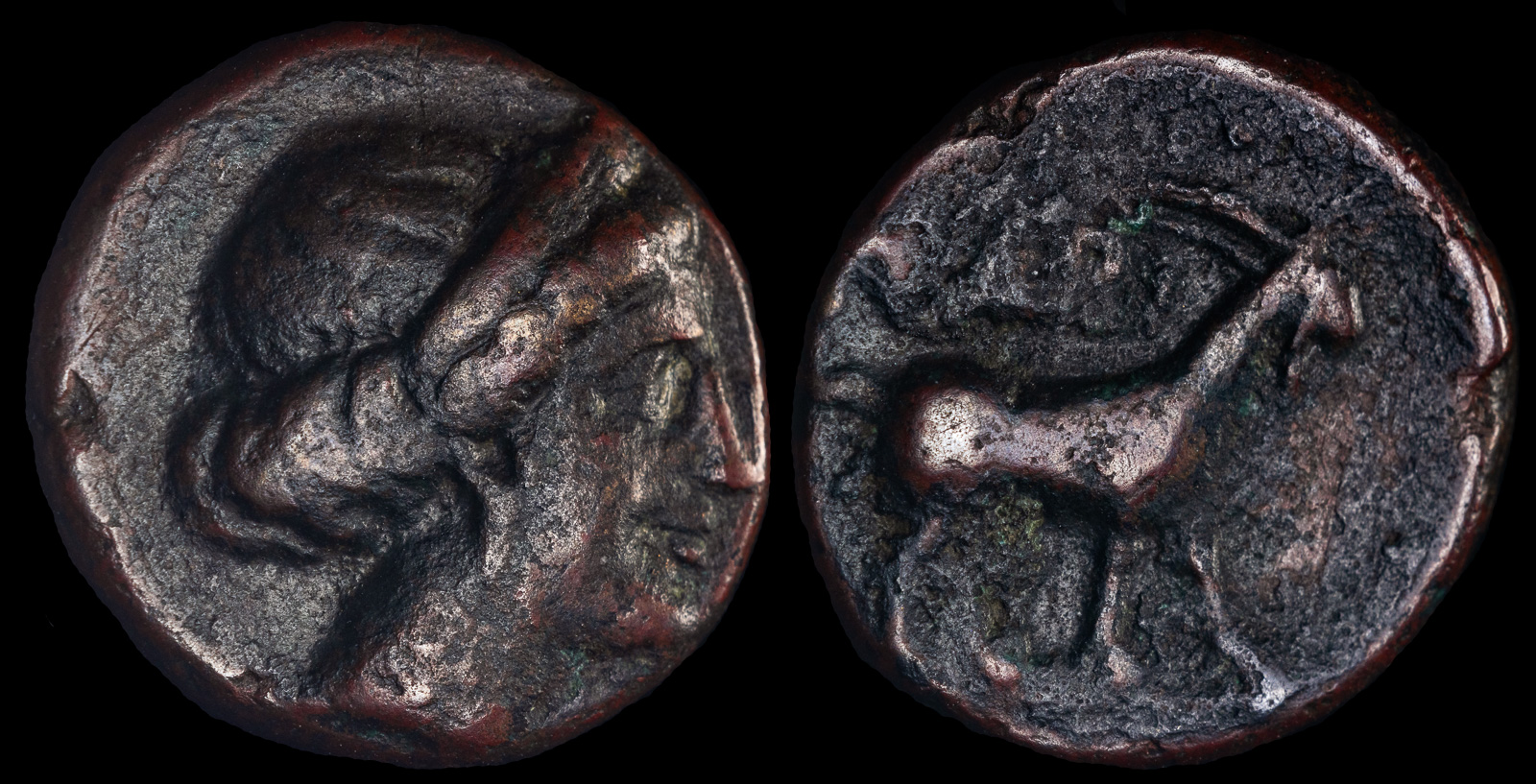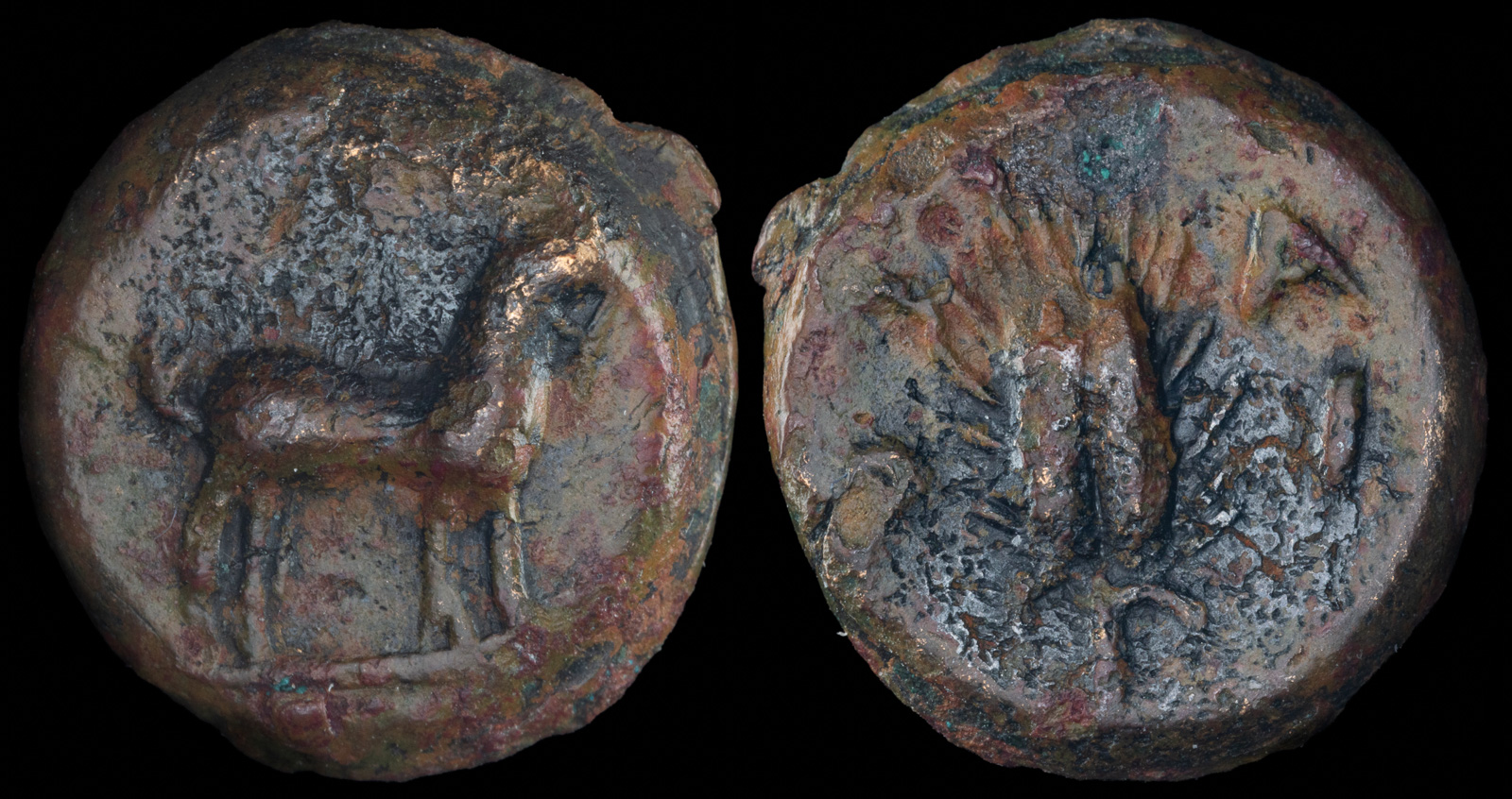
Cyclades, Paros
Late 4th-1st centuries BCE
Ae Dichalkon 16mm 3.57g
Obv: Head of female right, wearing stephanos.
Rev: ΠΑΡΙ. Goat standing right.
Tully Group 2.B.1; HGC 6, 670
Paros was a major place in the Aegean. It was colonized by settlers from Athens and eventually colonized itself Thasos and Parium. They also founded the colony of Pharos on Illyria in 385 BCE, which explains why the coinage of both cities contains a goat.
Around the time of the Persian Wars, Paros was dependent upon Naxos. They joined the Persian side and as a result were besieged by Athens after the war. However, in a sign of their power, that siege failed.

Cyclades, Paros
Late 3rd-mid 2nd centuries BCE
AE 12mm 1.57g
Goat standing right/
Barley ear of five grains, A to right
SNG Copenhagen 719
In the second Persian War, they again sided with the Persians, though their troops did not see action, and were summarily punished with a large fine by Themistokles. They were forced to join the Delian league and had among the highest dues. In 357 BCE, along with Chios, it left the confederacy.
Per Athenaios: “As for those on the island of Paros – excellent figs grow there too, which the Parians refer to as blood-figs and which are the same as the so-called Lydian figs; they got this name because of their reddish color.”
As punishment for their support of the Persians, Athens besieges Paros after a heavy fine is rejected. After 26 days, the Athenians are forced to depart.
Paros pays the highest amount of all islands in the Delian League.
Athens under Theramenes remove the oligarchy in Paros and replace it with a democracy.
355 BCE